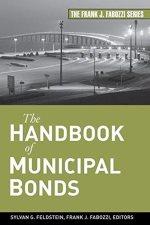Use all of the information in the previous break-even quantitative question this part hasn't changed): You are trying to determine the financial break-even (as we defined in class) market size for the following project. Your initial investment cost is $150 million, and that investment will depreciate in straight-line form over the 20-year life of the project. There are no new NWC requirements, and there will be no salvage value at the end of the 20 years. The tax rate is 25%. The discount rate is 20%. The possible values for Market Share, Price/Unit, VC/Unit, and Fixed Costs are below. Pessimistic Expected Optimistic Market Share 4.0% 5.0% 6.0% Price/unit $2350 $2500 $2570 VC/Unit $1900 $1540 $1100 FC $3.5 Million $2 Million $0.5 Million But now assume that you found the break even cash flow to be $40 million, Determine the financial break-even EBIT, Input your answer in millions of dollars, rounded to the nearest 0.01 Iso if your answer is $5,511.000, answer 5.51). (Do not input the assumed break-even EBIT from the next question, it will not get you credit here) > BO ET F2 00 SY DU TH C @ A & * 2 3 $ 4 % 5 6 7 Y 0 8 9 7 W ERITY C Use all of the information in the previous break-even quantitative question this part hasn't changed): You are trying to determine the financial break-even (as we defined in class) market size for the following project. Your initial investment cost is $150 million, and that investment will depreciate in straight-line form over the 20-year life of the project. There are no new NWC requirements, and there will be no salvage value at the end of the 20 years. The tax rate is 25%. The discount rate is 20%. The possible values for Market Share, Price/Unit, VC/Unit, and Fixed Costs are below. Pessimistic Expected Optimistic Market Share 4.0% 5.0% 6.0% Price/unit $2350 $2500 $2570 VC/Unit $1900 $1540 $1100 FC $3.5 Million $2 Million $0.5 Million But now assume that you found the break even cash flow to be $40 million, Determine the financial break-even EBIT, Input your answer in millions of dollars, rounded to the nearest 0.01 Iso if your answer is $5,511.000, answer 5.51). (Do not input the assumed break-even EBIT from the next question, it will not get you credit here) > BO ET F2 00 SY DU TH C @ A & * 2 3 $ 4 % 5 6 7 Y 0 8 9 7 W ERITY C







